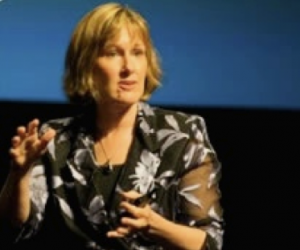
Karen Cator, director of education technology for the U.S. Department of Education (ED), has heard the concerns from ed-tech groups about President Obama’s 2011 budget proposal, which would fold the largest single source of federal funding for school technology equipment, software, training, and support into a larger grant program that aims to promote effective teaching and learning.
The concerns about the lack of a dedicated funding stream for education technology in the 2011 budget are “valid,” Cator said. But she defended the administration’s approach by noting that it encourages the integration of technology throughout all content areas.
“Every pot of money is really an opportunity to purchase technology, or to engage with technologies, to reach the goals of the program,” she said.
In a video interview with eSchool News on March 3, Cator discussed the president’s 2011 budget proposal along with highlights from the new National Education Technology Plan, which her department released in draft form March 5.
Click below to watch Karen Cator’s interview with eSchool News on eSN.TV
[field name=iframe]
Under Obama’s budget plan, the Enhancing Education Through Technology (EETT) program would be consolidated along with several other grant programs into a new initiative called Effective Teaching and Learning for a Complete Education.
This new initiative would focus on improving teaching and learning within three areas: Literacy, STEM (science, technology, engineering, and math), and Well-Rounded Education (arts, foreign languages, civics and government, history, geography, economics, financial literacy, and other subjects).
According to ED officials, the new initiative would “include a focus on integrating technology into instruction and using technology to drive improvements in teaching and learning” throughout all three areas.
Most of the money would be awarded through competitive grants to state and local education agencies, but ED also would set aside money for national activities, such as grants to support research and technical assistance, grants to “strengthen the use of technology in the core academic subjects”; and a competitive grant program to encourage the development of “high-quality digital educational content for children.”
Ed-tech advocacy groups were not happy with that approach.
“We are deeply concerned about the president’s proposal to consolidate [EETT], which would leave our nation with no dedicated federal education technology funding,” said the Consortium for School Networking (CoSN) in a statement. “Eliminating EETT, a program that is essential to making our students college- and career-ready and our teachers the best they can be, would be devastating at every level of our education system.”
Cator said she understands the concerns of CoSN and others. She added that federal officials recognize they need to continue to support state and local leadership capacity when it comes to education technology.
“What we’re really trying to do is understand all of the needs for funding technology,” she said.
Besides supporting core content-area instruction, other areas of the federal budget where Cator said she sees “tremendous opportunities for technology” include making teachers as effective as possible and giving students access to high-quality educational opportunities in rural or underserved areas.
She said the administration knows it needs to continue funding the e-Rate and other programs to bring broadband access to the nation’s schools.
“Then, we need to make sure there are ways to fund the infrastructure for learning inside the schools,” she said, “so just like we fund facilities and doors and electricity, … we need to fund networks and the personnel, the people, the processes that make [technology] as effective as possible.”
Note to readers:
Don’t forget to visit the Measuring 21st-century skills resource center. Graduates who enter the workplace with a solid grasp of 21st-century skills bring value to both the workplace and global marketplace. Go to:
Measuring 21st-century skills
- Ozobot Launches Self-Service Professional Development Courses - April 17, 2024
- Demco Acquires StickTogether, Accelerating StickTogether’s Mission and Expanding Demco’s Range of Innovative Solutions - April 16, 2024
- EPS Learning Programs Selected by Virginia Board of Education as Recommended Literacy Solutions - April 15, 2024


Comments are closed.